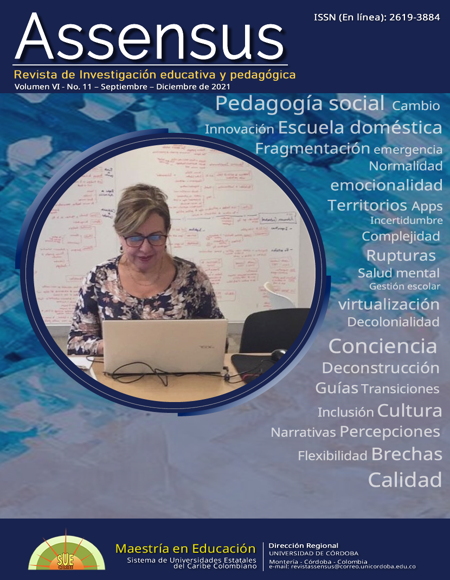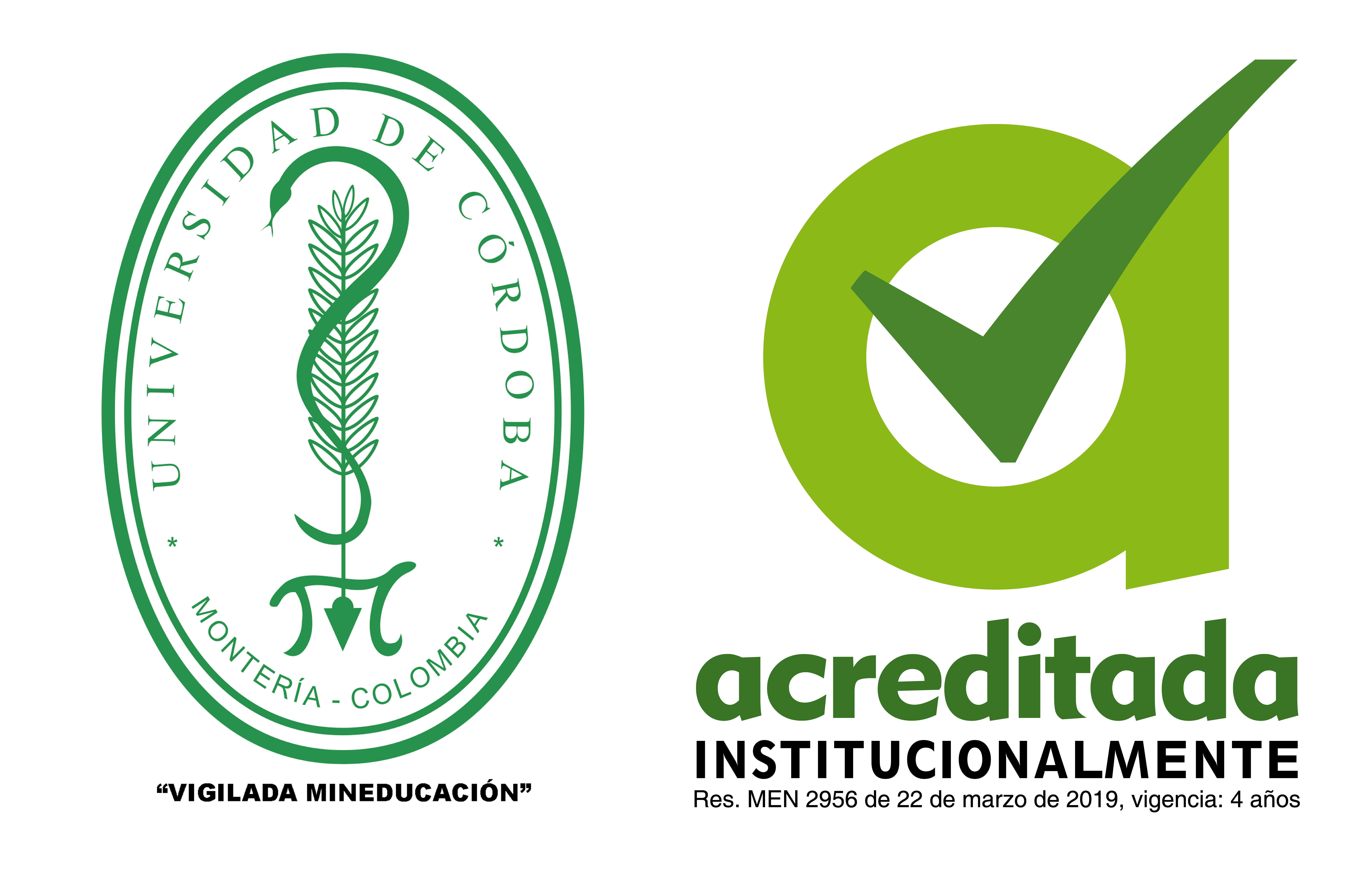Self-regulation of learning through digital technologies
Autorregulación del aprendizaje a través de las tecnologías digitales Self-regulation of learning through digital technologies
The Assensus journal has a Creative Commons license. The citation, use and partial or total reproduction of the contents is authorized by citing sources. For more information, see https://creativecommons.org/licenses/by-sa/4.0/deed.en
Show authors biography
The objective of this research was to analyze the use of technologies by students to regulate their learning process, making an emphasis on the regulation strategies employed. The problem was approached from two perspectives: Which is the use that students make of technologies to regulate their learning process? And, which strategies of self-regulated learning do students employ using technology? The approach of this study was quantitative, the design was non-experimental, descriptive and cross-sectional. The sampling was non-probabilistic and the technique used for data collection was the survey. The present research counted with the participation of 87 subjects from 14 Masters in Education programs of 2 public and 3 private universities in the city of Santo Domingo. The results indicate that graduate students make frequent use of technologies to self-regulate their learning process, being communication tools and the internet the most used technologies. Similarly, the self-regulated learning strategies used the most were collaborative learning, expansion and deepening information. It is important to highlight the need for employment of management and evaluation strategies that demand the use of metacognitive strategies, as well as deepening and reflecting. This would allow the students a greater domain of self-regulated learning.
Article visits 678 | PDF visits
Downloads
- Anthonysamy, L., Ah-Choo Koo, & Hew, S.-H. (2020). No TitleSelf-regulated learning strategies and non-academic outcomes in higher education blended learning environments: A one decade review. Tecnologías de La Educación y La Información, 3677–3704. https://doi.org/https://doi.org/10.1007/s10639-020-10134-2
- Beltran, A. (1998). Estartegias de Apendizajes.
- Bisquerra, R. (Coord), Dorio, I., Gómez, J., Latorre, A., Martínez, F., Massott, I., Mateo, J., Sabariego, M., Sans, T.,
- Torrado, M., & Vilá, R. (2019). Metodología de la Investigación Educativa. In MIDE de la Facultad de Pedagogía de la Universidad de Barcelona. La Muralla.
- Cabrales, O., & Diaz, V. (2017). El aprendizaje autónomo en los nativos digitales. Conhecimento & Diversidade, 9(17), 12–32. https://doi.org/https://doi.org/10.18316/rcd.v9i17.3473
- Campbell, A. (1993). The Teaching of Learning Strategies. Australian Science Teachers Journal, 39(4), 11–15.
- Carter, A., Basham, J., Blackorby, J., Marino, M., Smith, S., Travers, J., & Zao, Y. (2017). New Horizons: Designing and Measuring for Modern Learning Environments.
- Chaves-Barboza, E., Trujillo-Torres, J., Lpez-Nez, J., & Sola-Martnez, T. (2017). Actions and achievements of self-regulated learning in personal environments. Research on students participating in the Graduate Program in Preschool Education at the University of Granada. Journal of New Approaches in Educational Research, 6(2), 135–143. https://doi.org/https://doi.org/10.7821/naer.2017.7.236
- Chaves, E., Trujillo, J., & López, J. (2016). Acciones para la autorregulación del aprendizaje en entornos personales. Pixel-Bit. Revista de Medios y Educación, 48, 67–82. https://doi.org/https://doi.org/10.12795/pixelbit.2016.i48.05
- Chelghoum, A. (2017). Promoting students’ self-regulated learning through digital platforms: new horizon in educational psychology. American Journal of Applied Psychology, 6(5), 123–131. https://doi.org/http://dx.doi.org/10.11648/j.ajap.20170605.17
- Daumiller, M., & Dresel, M. (2019). Supporting self-regulated learning with digital media using motivational regulation and metacognitive prompts. Journal of Experimental Education, 87(1), 161–176. https://doi.org/https://doi.org/10.1080/00220973.2018.1448744
- Daura, F. (2017). Aprendizaje autorregulado e intervenciones docentes en la universidad. Revista Educación, 41(2), 1–19. https://doi.org/http://dx.doi.org/10.15517/revedu.v41i2.21396
- Delgado, C. (2014). Viajando a Ítaca por mares cuantitativos. Manual de ruta para investigar en grado y postgrado. Amarú.
- Ding, C., & Hershberger, S. (2002). Assessing content validity and content equivalence using structural equation modeling. Structural Equation Modeling: A Multidisciplinary Journal, 9(2), 283–297.
- Ellis, A., & Lumas, H. (2018). The effects of adolescent self-regulated learning on engagement in a college access. Aera, 4(1).
- González, M., & Tourón, J. (1992). Autoconcepto y rendimiento escolar: sus implicaciones en la motivación y en la autorregulación del aprendizaje.
- Izcara, S. (2014). Manual de Investigación Cualitativa (Pri-mera). Fontamara.
- Johnson, G., & Davies, S. (2014). Self-regulated learning in digital environments: theory, research, praxis. British Journal of Research, 1(2), 68–80.
- Kennedy, G., Judd, T., Churchward, A., Gray, K., & Krause, K. (2008). First year students’ experiences with technology: Are they really digital natives? Australasian Journal of Educational Technology, 24(1), 108–122. https://doi.org/https://doi.org/10.14742/ajet.1233
- Kingsbury, M. (2015). Encouraging independent learning.
- Llera, J. (2003). Estrategias de aprendizaje. Revista de Educación, 332, 55–73.
- Lourenco, D., & Ferreira, A. (2019). Self‐regulated learning and training effectiveness. International Journal of Training and Development, 23(2), 117–134. https://doi.org/https://doi--org.us.debiblio.com/10.1111/ijtd.12149
- Mainar, J. (2002). La enseñanza del pensamiento estratégico: programa de estrategias básicas de aprendizaje contextualizado PEBAC. In Estrategias de aprendizaje: concepto, evaluación e intervención (pp. 53–87). Piramide.
- Marcelo, C., & Rijo, D. (2019). Aprendizaje autorregulado de estudiantes universitarios: Los usos de las tecnologías digitales. RECIEE. Revista Caribeña de Investigación Educativa, 3(1), 62–81. https://doi.org/https://doi.org/10.32541/recie.2019.v3i1.pp62-81
- Monereo, C. (2000). El asesoramiento en el ámbito de las estrategias de aprendizaje. Visor.
- Panadero, E. (2017). A review of self-regulated learning: Six models and four directions for research. Frontiers in Psychology. Frontiers Media S.A., 8, 422. https://doi.org/https://doi.org/10.3389/fpsyg.2017.00422
- Pintrich, P. (1999). The role of motivation in promoting and sustaining self-regulated learning. International Journal of Educational Research, 31(6), 459–470. https://doi.org/https://doi.org/10.1016/S0883-0355(99)00015-4
- Pintrich, P. (2004). A conceptual framework for assessing motivation and self-regulated learning in college students. Educational Psychology Review, 16(4), 385–407. https://doi.org/https://doi.org/10.1007/s10648-004-0006-x
- Romero, S., & Ordoñez, X. (2018). Métodos, diseños y técnicas de investigación psicológica y educativa. CEF.
- Sahin-Kizil, A., & Savran, Z. (2016). Self-Regulated Learning in the Digital Age: An EFL Perspective. Novitas-ROYAL (Research on Youth and Language), 10(02), 147–158.
- Torrano, F., & González, M. (2004). El aprendizaje autorregulado. Presente y futuro de la investigación. 2(1), 1–33.
- Weinstein, C., & Mayer, R. (1983). The teaching of learning strategies. Innovation Abstracts, 5(32), 1–33.
- Yot-Domínguez, C., & Marcelo, C. (2017). University students’ self-regulated learning using digital technologies. Nternational Journal of Educational Technology in Higher Education, 14(38). https://doi.org/https://doi.org/10.1186/s41239-017-0076-8
- Zimmerman, B., & Martínez-Pons, M. (1986). Development of a structured interview for assessing student use of self-regulated learning strategies. American Educational Research Journal, 23(4), 614–628. https://doi.org/https://doi.org/10.3102/00028312023004614
- Zinmmerman, B. (1986). Development of a structured interview for assessing student use of self-regulated learning strategies. American Educational Research Journal, 23(4), 614-628.
- Zinmmerman, B. (1990). Aprendizaje autorregulado y logro académico: una descripción general. educativo. Psicólogo Educativo, 25(1), 3–17.
- Zinmmerman, B. (1998). Academic studing and the development of personal skill: A self-regulatory perspective. Educational Psychologist, 33(2–3), 73–86. https://doi.org/https://doi.org/10.1207/s15326985ep3302&3_3
- Zinmmerman, B. (2002). Becoming a self-regulated learner: an overview. Theory into Practice, 41(02), 64–70. https://doi.org/https://doi.org/10.1207/s15430421tip4102_2
- Zinmmerman, B., & Schunk, E. (2011). Educational psychology handbook deries. Handbook of self-regulation of learning and performance. Routledge.



